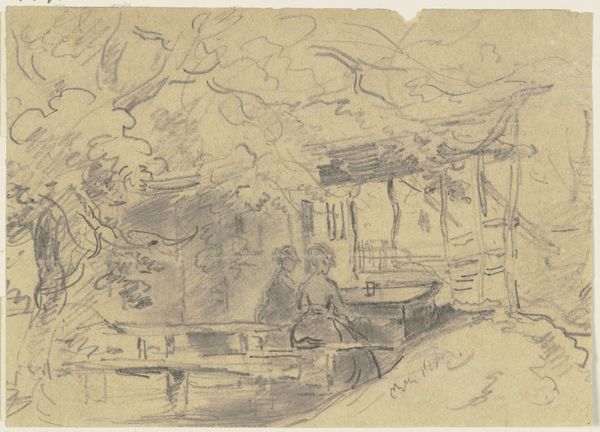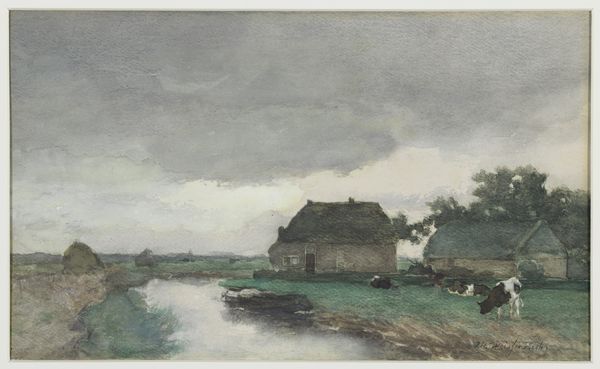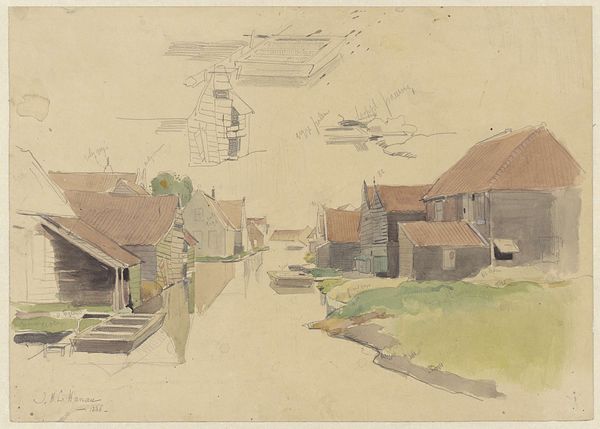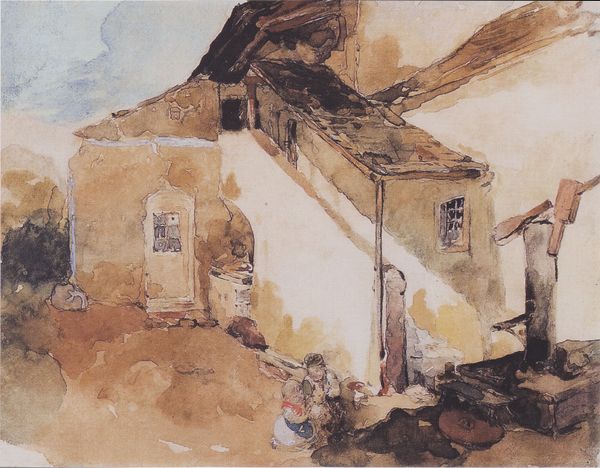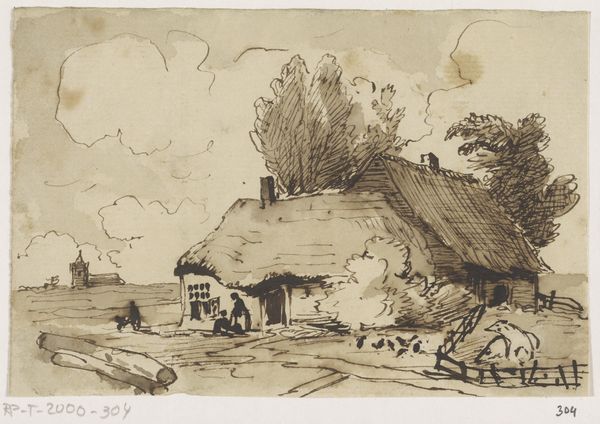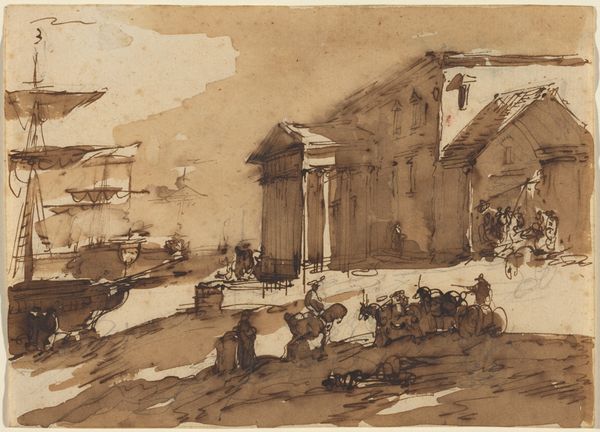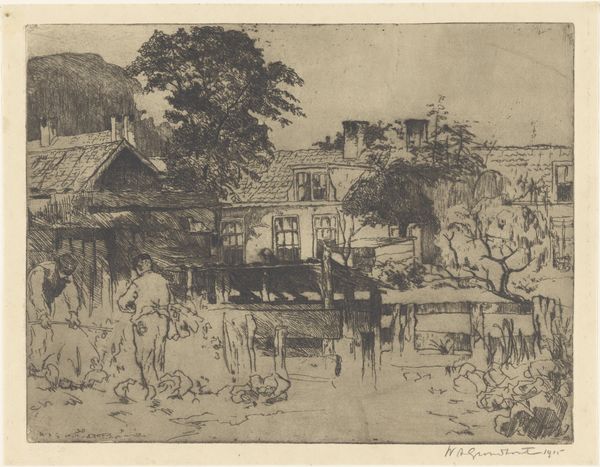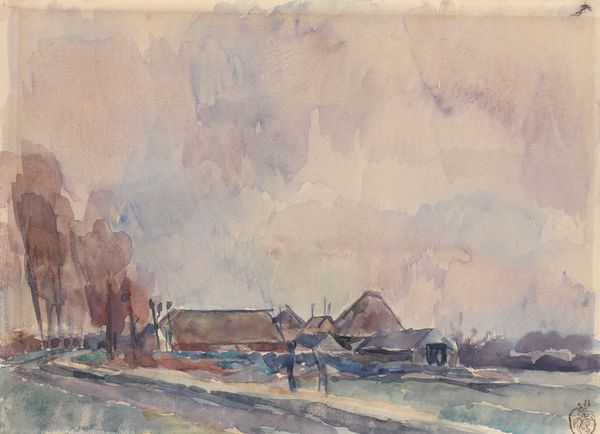
drawing, painting, watercolor
#
drawing
#
dutch-golden-age
#
painting
#
impressionism
#
human-figures
#
landscape
#
watercolor
#
coloured pencil
#
cityscape
#
genre-painting
#
watercolor
#
realism
Dimensions: Sheet: 16 1/16 × 19 1/16 in. (40.8 × 48.4 cm)
Copyright: Public Domain
Editor: So this is Jacob Maris's "Dutch Canal, Rijswijk," painted sometime in the latter half of the 19th century. It's watercolor and pencil on paper, currently residing here at the Met. There's something melancholic about it... a certain softness in the grays and browns that gives it this wistful, almost dreamlike quality. How do you interpret its visual impact? Curator: The atmospheric perspective is paramount here. Note how Maris uses muted tones and blurred lines to create depth. The strategic placement of the bridge and the subtle recession of forms pull the eye through the composition, while the repetition of horizontal lines emphasizes the flatness of the Dutch landscape. Do you notice how the texture of the paper contributes to the overall aesthetic? Editor: I do see that! The rough texture beneath the watercolor adds this interesting element...almost like the buildings are dissolving into the sky. But what's the significance of using watercolor in this context? Does it serve a specific purpose beyond its aesthetic qualities? Curator: Precisely. Watercolor lends itself to capturing transient atmospheric conditions—the ephemeral play of light and shadow. Its fluidity allows Maris to depict the subtle gradations of tone that are crucial for conveying a sense of atmosphere and mood. Consider how the loose washes of color create a sense of movement and spontaneity, blurring the boundaries between form and background. Editor: That makes sense. It really is all about capturing a fleeting moment, isn't it? I guess I was focused so much on the “what” that I didn’t appreciate the “how.” I'll definitely look closer at the materiality and its purpose from now on. Curator: Indeed. By closely examining the formal elements of a work—its composition, color, and materiality—we unlock layers of meaning that might otherwise remain hidden. Keep questioning!
Comments
No comments
Be the first to comment and join the conversation on the ultimate creative platform.

